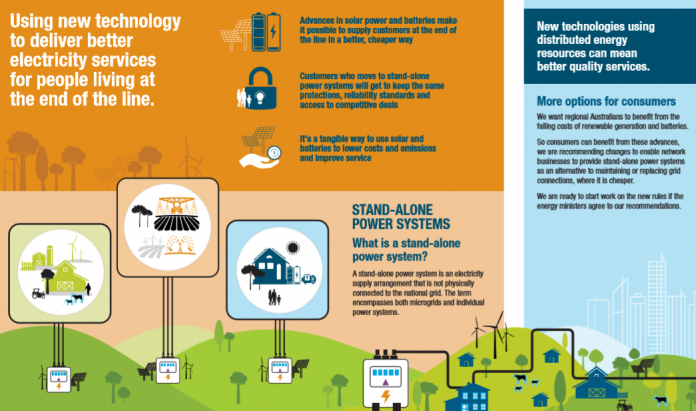
The Australian Energy Market Commission (AEMC) has published the final report for its review of regulatory arrangements to support the efficient delivery of stand-alone power systems by distributors while preserving access to retail competition and consumer protections.
The report, which was built on work undertaken by the Commission in 2017, sets out final recommendations for a national framework that facilitates the provision of stand-alone power systems by distribution businesses to their existing customers, where these provide an efficient alternative to traditional poles and wires investment.
The Commission is recommending a range of regulatory changes to enable distribution network businesses to supply their customers with stand-alone power systems, particularly where the costs of providing a grid-connected service might be high — for instance, in remote locations and areas which are difficult to access or susceptible to bushfires.
“This work is particularly relevant for remote and rural communities where power supplies can be unreliable or subject to frequent or extended blackouts,” reads the report,
“Our proposals would enable those communities to use distributed energy resources to have better quality electricity services.”
AEMC Chief Executive Mrs Anne Pearson said that after consultation with relevant customers, a stand-alone power system – usually a combination of solar PV, batteries and a back-up generator – would be installed by a customer’s distribution network at no cost to the customer.
She said the cost savings arising from the use of lower cost standalone power systems will flow through to all users of the distribution network, through lower network prices.
“New technology using distributed energy resources is making it possible to supply customers at the end of the line in a cheaper and better way,” Mrs Pearson continued.
“The old-fashioned way of centralised generation being distributed by stringing poles and wires to the remote corners of Australia is giving way to solar and battery systems where energy is generated closer to where it is used.
“These reforms mean that people living at the end of the line will get a better quality service with the same protections without paying any more.
“Ultimately, reducing the need for poles and wires to service remote consumers reduces the network costs which make up around 50 per cent of the average electricity bill. It also reduces bushfire risk and the visual impacts of power lines.”




















